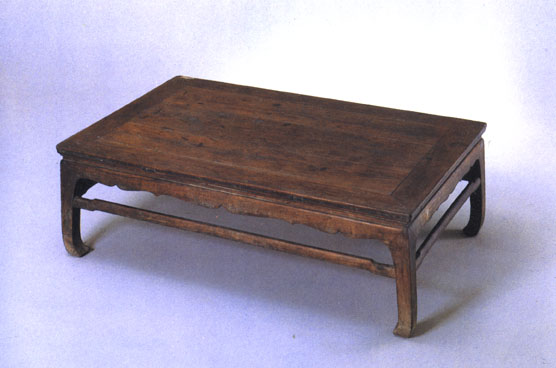|
|
|
|
| During the Ming
dynasty, Chinese furniture received much greater attention than in
previous times. Interior design became a sophisticated practice in which
furniture was intended to complement a home. The aesthetic value of
tables and chairs was part of the development of specific designs
corresponding to specific functions. In addition, construction
techniques and materials used were as appreciated as the design of
furniture.
What different shapes and sizes of tables can you find in the images on this page? What functions do you think might be specific to different designs? |
|||
|
|
|||
|
A Ming dynasty woodblock print
|
Wood block print
|
||
|
Notice that in the woodblock prints above, the furniture is bare. |
|||
|
The material of these tables is huanghua li or "yellow rosewood." Why do you think this type of wood was highly favored by Chinese carpenters and homeowners?
|
|||
|
|||
|
Why might the table below be so short?  |
|||
|
A Ming period kang table
If you haven't already looked at the kang and its furniture, click here. |
|||
 An
important feature of much classical Chinese furniture is that it is made
without nails. An
important feature of much classical Chinese furniture is that it is made
without nails.
If nails were not used, how do you think these tables and chairs might have been constructed?
|
||||
|
Ming dynasty armchairs
|
||||

Note the similarities and differences between the chairs in the print at right and the chairs above. How many different types of chairs do you see in the images on this page?
|
||||
|
High-back chairs as seen in a Ming dynasty woodblock print
|
||||
 |
|
|||
|
Round drum stool from the Ming dynasty
|
||||
|
||||